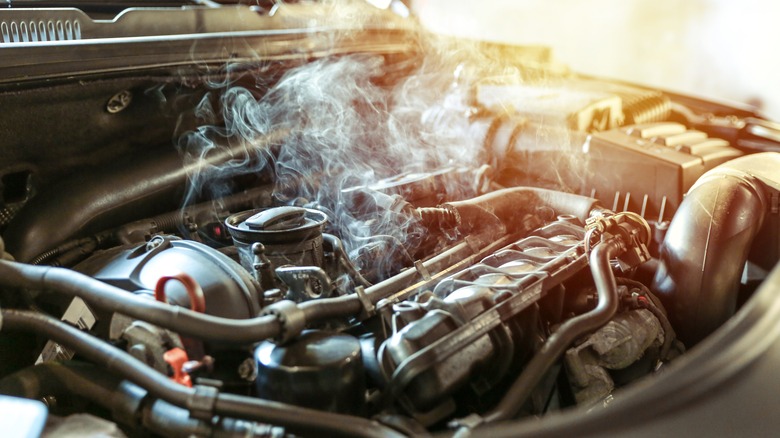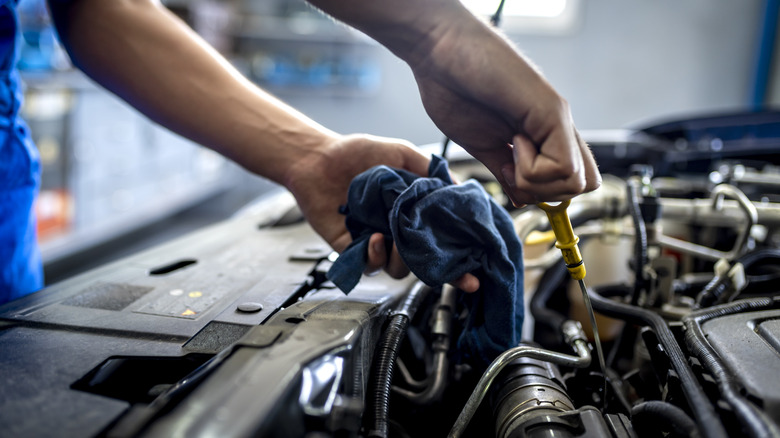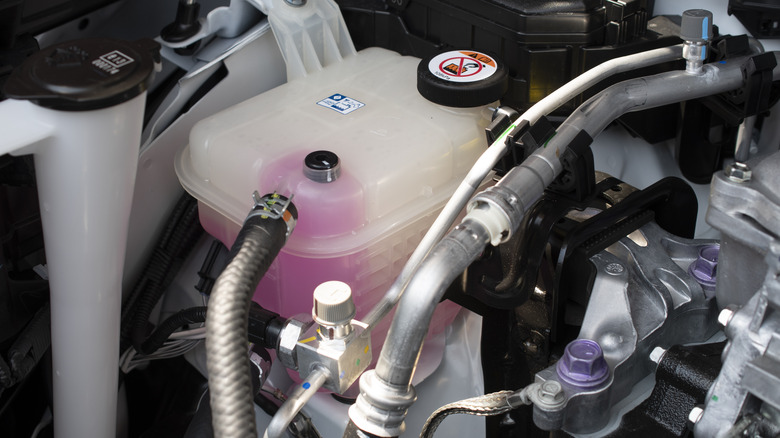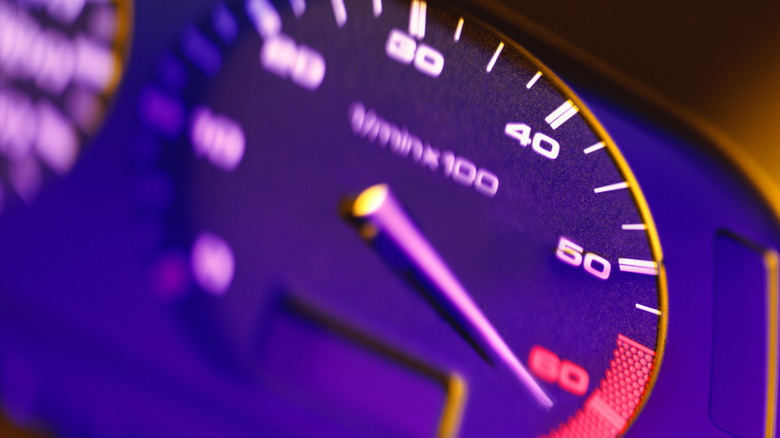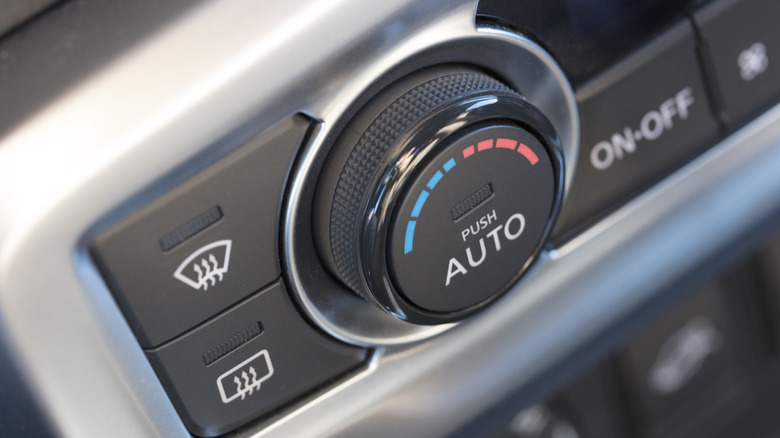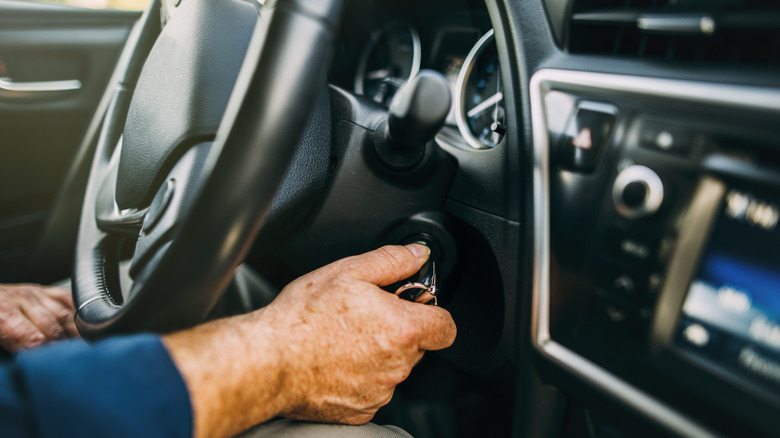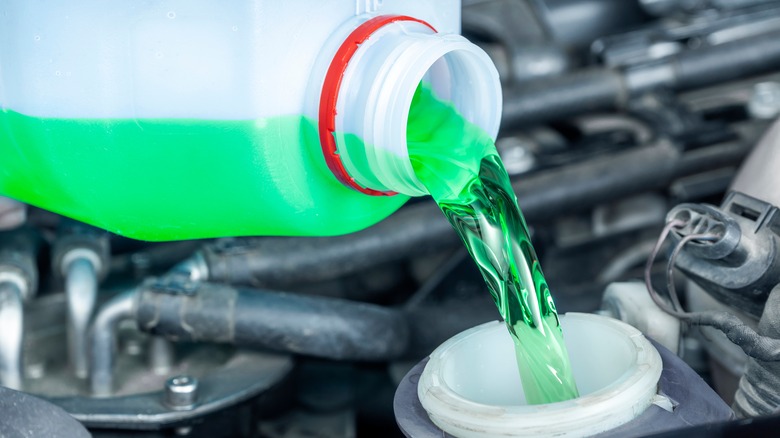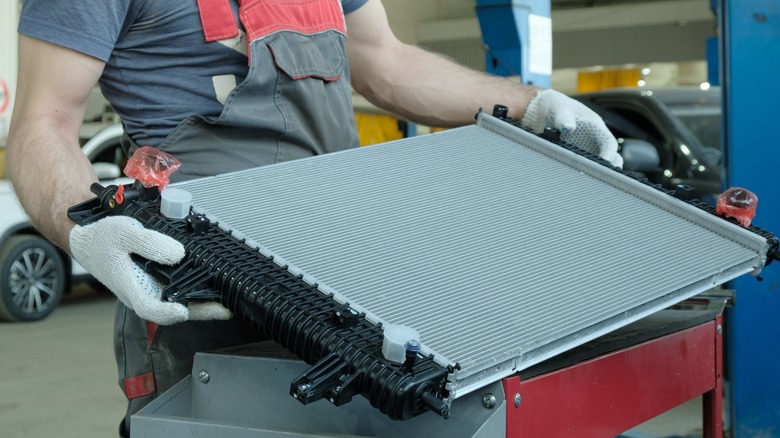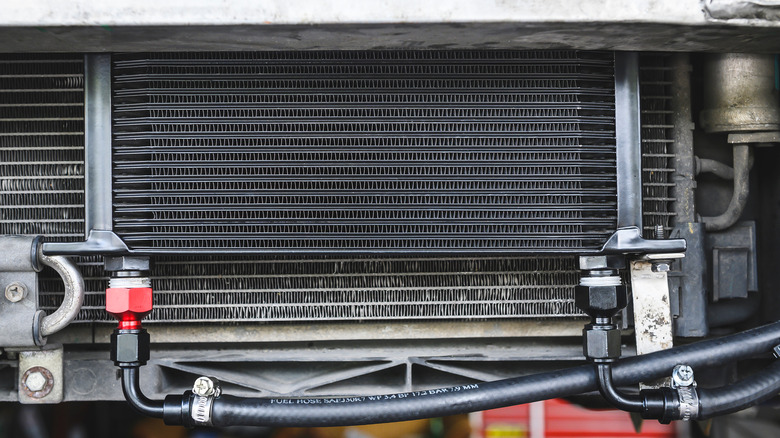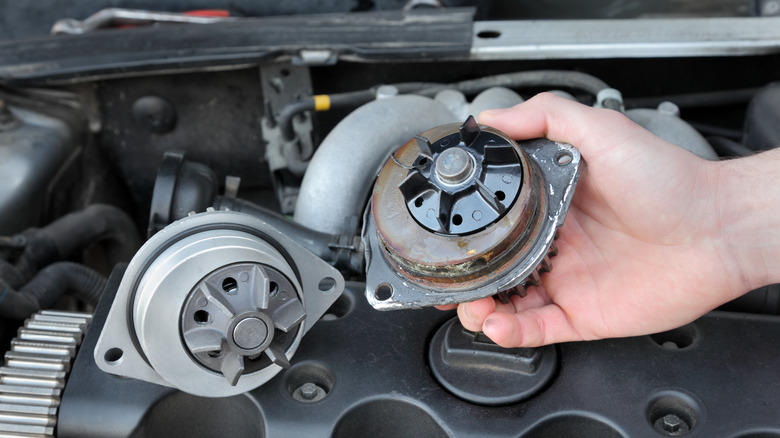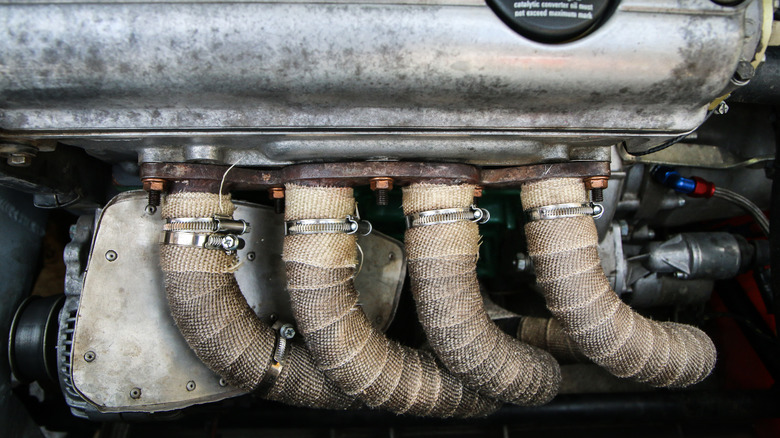10 Ways To Keep Your Vehicle Engine Cool During Extreme Heat Conditions
Record-high temperatures around the world have become the new normal, and it will probably get worse in the coming decades. This unprecedented change in global climate has had a severe impact on our planet's life, but it also affects human-made machinery like cars. Extreme summer heat, spiced up with the effects of global warming, puts a huge stress on the vehicle's components and could lead to the engine overheating.
Now, cars are designed with these heatwaves in mind and tested in the most severe conditions. Thus, when working properly, the cooling system should be sufficient enough to cool the engine, even in the most challenging conditions. Even so, this assumes that the cooling system is in optimal condition and that you adjust the driving style according to the conditions outside. Not to mention, even slight engine tuning can increase the engine's heat production, putting a higher stress on the cooling system.
With that in mind, I'd like to give you some advice on how to keep your engine cool in extreme heat. Apart from writing on everything automotive for almost two decades, I've studied engineering and motor vehicles at the University of Cyril and Methodius in Skopje and worked as an aftermarket manager at a car dealership, where I learned about the nitty-gritty of engine cooling. Meanwhile, I meddled with some tuned cars and found upgrades that can keep the engine cool, even during aggressive driving. So, let's have a look at the steps you should take to ensure your engine stays cool during the summer.
Check fluid levels regularly
Regular maintenance is crucial to ensure the reliability and longevity of your car. However, most people associate this with bringing their cars to the shop once or twice every year. That's fine, but occasionally checking the fluid levels will ensure your engine is always in its optimal working condition and significantly reduce overheating issues.
When it comes to engine overheating, the coolant (antifreeze) and oil are crucial. The former is quite obvious, as it directly affects the efficiency of the cooling system. Therefore, it's crucial to check the antifreeze level regularly during the hot summer months and before going on a long road trip. If necessary, top up the coolant to the recommended "MAX" line. Always use the recommended coolant type for your engine.
However, if it has an unusual smell and looks dirty or rusty, I would recommend flushing the coolant. Moreover, antifreeze degrades over time and loses its property to cool the engine properly. Not only that but as it gets older, the coolant becomes acidic, accelerating rust and aging of various engine parts. Therefore, it would be a good idea to replace it every five years or 30,000 miles.
The motor oil is also crucial in keeping your engine cool by lubricating components and decreasing friction, as well as moving away heat from critical components not cooled by the cooling system, such as the pistons and bearings. Not having enough motor oil inside can generate heat buildup in certain parts, while old and degraded oil has reduced viscosity and lubrication properties. Thus, always keep your motor oil topped up and replace it at regular intervals.
Inspect the cooling system
The cooling system is essential in keeping your engine at its normal operating temperature. It does that by moving the heat from the engine to the radiator using cooling fluid, where it dissipates the heat to the environment. The water pump is in charge of moving the coolant around, and the thermostat keeps the temperature at a certain range by limiting/increasing the coolant flow from the radiator to the engine while the radiator cap ensures proper pressure.
If one of those parts fails, the cooling capacity of the system will decrease. Thus, it's crucial to inspect the system regularly. Start by searching for leaks from the radiator, hoses, and around the thermostat or fuel pump. The first thing you want to determine is whether the radiator is clogged, as this would limit its heat dissipation properties. To do that, open the cap and remove the lower hose, then pour water from the top opening. If the water comes out slowly below, the radiator is clogged. I recommend visiting a repair shop to get the radiator cleaned.
A stuck thermostat can also lead to overheating. To check whether the thermostat is the culprit, you would need to remove it and test it in boiling water. If the thermostat remains stuck once the water reaches a certain temperature (you can check using a gauge), you should replace it. Meanwhile, a bad water pump will leak or produce a squealing noise, requiring immediate replacement. Finally, check whether the pressure release valve in the radiator cap moves freely to ensure operating pressure inside the cooling system.
Avoid overworking your engine — but also avoid constant low RPM
To avoid engine overheating in very hot conditions, it would be smart to ease the burden on your engine. This happens a lot when people go on a summer holiday — the car is overloaded with passengers and cargo, and the driver pushes the gas pedal even further to keep up with traffic, particularly on inclines. Such scenarios can easily overcome the ability of the cooling system to keep the engine in its operating window, leading to overheating. In these circumstances, it would be best to ease off the gas pedal a bit or use a higher gear to reduce the engine revolutions.
That said, leaving your engine idling in hot conditions can also lead to overheating. Of course, less fuel is combusted this way, meaning the combustion temperature is lower. Still, because the water pump is connected to your engine via an auxiliary belt, it would also push less coolant through the system, decreasing the cooling properties. Thus, rev your engine occasionally when stationary, like in traffic.
Pro tip: engine braking can also cool down the engine. Combustion doesn't occur when you keep your transmission in gear and you completely release the gas pedal, which significantly reduces the temperature inside the combustion chamber. Moreover, the high engine revolutions ensure enough fresh coolant passes through the engine, cooling it off quickly, particularly on descents. Sure, there is some additional temperature from friction, but that's insignificant compared to combustion temperature. Besides, engine braking is safer than relying solely on the brakes, so use it to your advantage.
Turn the heater on (and redirect the flow outside)
You can also use your car's heater to lower the engine's temperature if it overheats. It is a makeshift solution, sure, but I used it to save my old Corolla from overheating 60 miles from home after the thermostat got stuck. It can also help with a clogged radiator because the heater element is actually another smaller radiator that adds to the cooling capacity of the system. However, it won't help with a faulty water pump because the coolant flow will be limited.
Now, the idea of heating the cabin when the temperature outside is scorching hot certainly seems awkward. However, you can make it a bit more bearable by pushing the airflow only to the outer vents on your dashboard. Then, open the windows and direct the airflow to the outside. Since the air coming through the vents is warmer, it should easily escape the cabin. Just make sure you choose the fresh air setting, as it will cool down your engine more quickly.
If Nothing Works, Pull Over and Turn Off Your Engine
In some circumstances, driving slower or using the heater won't do the trick, and the temperature needle will continue to rise. This mostly happens due to a faulty water pump, but a low coolant level, clogged radiator, stuck thermostat, bad radiator cap, or leak anywhere in the system could also be a culprit.
When you are faced with this situation, it would be best to pull over at a safe location and turn off the engine. However, make sure you turn the key back to the ON position. This is important, as it will allow the radiator fan to receive electricity and cool the radiator and engine block by pushing airflow around. After a few minutes, open the hood, as this will allow hot air to quickly escape into the atmosphere. Don't rush this, as the accumulated hot steam might cause burns.
Please note that inspecting the cooling system at this point is very dangerous, as the coolant will be highly pressurized and very hot. Don't even think about opening the cap before the engine cools down significantly, or you might burn yourself. Using safety gloves or a rag is highly recommended to reduce risk.
Once cooled down, top up the system with coolant or distilled water, turn the engine back on, and leave it working until it gets back to operating temperature to see if it overheats. If the temperature stays within the normal range, drive slowly but peek constantly at the temperature gauge on the instrument cluster.
Use coolant additives
Coolant additives won't save a badly-operating cooling system that needs servicing. However, they will add to the cooling capacity of a healthy system and might prove beneficial in high-performance cars that are used to their full potential, such as when they are driven on a track. These additives have surfactants that reduce the coolant's surface tension. In other words, they eliminate the microbubbles in the fluid, thus increasing its thermal conductivity. As a result, coolant additives can lower the temperature around critical parts, like the cylinder head, meaning they have a positive effect on the engine's durability.
Using coolant additives has other potential benefits. For instance, they are equipped with anti-corrosion agents, which prolong the life of metal parts of the cooling system, like the radiator, water pump, and even engine block. This is true even if you use them only with distilled water, as they don't need to be mixed with antifreeze to operate well at higher temperatures. That said, remember that it is crucial to have antifreeze in the system before the winter to ensure the coolant fluid doesn't freeze.
Consider a larger radiator
A larger radiator probably won't be necessary on your vehicle, as its cooling system is designed with the climate in your area in mind. However, any modification you make to your engine to extract more power will result in higher heat output and might overwhelm the cooling system. In that case, installing a larger aftermarket radiator can be beneficial because it has a larger surface area for heat dissipation. In other words, a larger radiator will reduce the coolant temperature more quickly and can also cool down more coolant per unit of time.
However, a larger radiator also adds weight to the front of your vehicle, affecting handling, performance, and fuel efficiency. A larger radiator also adds aerodynamic drag, which can further hamper performance and efficiency. For that reason, I would recommend installing a larger radiator only if you find it truly necessary. A good example would be a tuned car used frequently on the track; however, overheating is particularly common on high-boost turbocharged builds, which produce more heat and require much better cooling.
Consider an oil cooler
An oil cooler isn't necessarily a standard part in most new cars, although it's not uncommon to see one used alongside an automatic transmission. However, motor oil coolers have become more popular ever since manufacturers began using downsizing (smaller capacity engine and turbocharger) to increase power and improve fuel efficiency. Even so, as is the case with a larger radiator, an oil cooler, or a larger one compared to the factory cooler, will prove beneficial in track-day or tuned cars.
An oil cooler will keep the oil's temperature lower, allowing it to more successfully draw heat away from critical engine parts, like pistons/piston rings and bearings. As a result, this simple upgrade will keep your engine from overheating but also prolong the life of its internal parts. There are other benefits to having an oil cooler. For instance, it keeps the oil in a tighter temperature and viscosity range, especially an oil cooler with a thermostat, which enhances the oil's lubrication properties.
Consider upgrading to a high-flow water pump
The water pump recirculates the coolant inside the cooling system and has enough flow capacity to cool down the engine it is designed for. Again, though, for tuned or track-day cars, it can be beneficial to upgrade to a high-flow water pump, especially when paired with a larger radiator. Apart from the higher flow rates, these pumps also increase the pressure inside the cooling system.
As a result, high-flow water pumps prevent the formation of bubbles or steam pockets, which can cause hot spots in various areas of the engine. Moreover, the higher pressure reduces the chances of cavitation, which can decrease flow efficiency. In other words, your engine will work less to turn the water pump while receiving better cooling. Finally, by keeping critical parts cooler, like the area around the combustion chamber, high-flow water pumps can also limit knock (detonation), reducing the risk of catastrophic engine failure.
Consider exhaust wraps or ceramic coatings
Another way to reduce the temperature inside the engine bay is by using exhaust wraps or ceramic coatings. These both keep the heat from the exhaust manifold from increasing the temperature inside the engine bay. There is quite a lot of heat coming from those pipes, as that's where the hot air from the combustion process is headed once pushed out from the engine.
So, potentially, exhaust wraps and coatings could help the cooling system work more efficiently. Naturally, there will be an impact, but don't expect miracles -– I would only recommend wrapping or coating the exhaust manifold as a cherry on top of an already improved cooling system.
Even so, reducing the temperature inside the engine bay will protect the surrounding bodywork from damage and keep the color shiny for longer. Moreover, there will be less radiant heat hitting the hoses and cables, prolonging their lifespan. As an added bonus, ceramic coatings also protect the exhaust pipes from corrosion.
